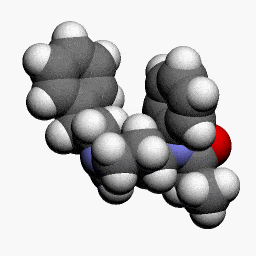Opioid analgesics are powerful chemicals that act on opioid receptor sites to produce identical morphine-like effects in the human body. They are used medically for acute pain relief, for example, when the pain of a broken arm or bruise would not let you take any rest (1). More recently, they have been used to treat chronic pain, for example, when the pain of an aching back won’t let you lie down and take some rest. As a result, we have several kinds of Opioid analgesic drugs, for different pain scenarios.

Although these opioids are not without their benefits and for many people, the choice of using them for their intended purpose, which is pain relief, is still a risk. Like any other medication, opioids carry with them both good and bad sides. It is important to know the possible outcomes of opioids and Opioid analgesic drug misuse and addiction (2).
Some Common Opioid Analgelsics
Opioid analgesics like codeine, hydrocodone, and oxycodone are the most frequently prescribed opioids. These are the ones that come most often in pill form. Codeine, hydrocodone, and oxycodone are also referred to as narcotics, due to their similarities to morphine, which is a Schedule II narcotic. This class of drugs is commonly abused and can lead to an addiction, though not necessarily progressive. Codeine is by far the most commonly abused drug, yet the others may be just as addictive.
How does the use of opioids include addiction?
Opioid analgesics are extremely addictive in nature. The use of the drug raises the body’s blood pressure levels, which in turn stimulates the brain to release more opioids. This causes a euphoric state, which individuals are typically addicted to.
How Opioid Analgesic Works
Opioid analgesics act by interfering with the entry into the brain of certain substances, namely morphine and naloxone. When the two substances enter, they inhibit the effect of the opioid and thereby reducing the amount of opium produced. Over usage and continued use leads to the body rejecting the effect of the opioids and releases even more of the substance, creating a dependency. As with any addiction, this can result in withdrawal, which makes it difficult to wean individuals from the drug (3).

Codeine as a Commonly Used Opioid.
Codeine is the most commonly used opioid, and its use comes with a range of serious side effects. Long-term use of codeine may produce opioid addicts unable to wean themselves from the drug. Codeine is a non-opioid analgesic, which means that it inhibits the production of certain chemicals in the body and produces its own natural opioid, called codeine alkaloids (4).
Codeine has low to moderate sedation and mild hyperpnea in most patients. It acts on the gamma-aminobutyric (GABA) inhibitory system, producing a calming influence as well as blocking migraine headaches. Two of the three classical opioid receptors, kappa-transaminase (Kappa-tau) and delta-aminobutyric acid (GABAs), are blocked by codeine in certain animal tests. This makes it a particularly powerful painkiller. In recent clinical practice, codeine is the most effective analgesic agent for short-term use in the treatment of moderate to severe chronic pain.
Opioid analgesics are used to treat a variety of diseases, although the most common is back and neck pain. In recent years, however, there has been considerable progress made in the development of non-opioid analgesics, which are effective in the treatment of a wide array of painful conditions. The non-opioid analgesics commonly used today, such as paracetamol, ibuprofen, and nubainyl, also act at the level of the nervous system and may have a beneficial effect in the management of chronic painful conditions, but should be administered under careful supervision and their use should be supervised by a medical professional.
Other great contents;
- Ibogaine: Exploring the Potential and Perils of a Psychedelic Therapy
- Behavioral Therapy: All You Need To Know About Behavioral Therapy
- Substance Use Disorders: Understanding the Science, Risks, and Recovery
- Cognitive Behavioral Therapy (CBT): Unveiling the Depths of a Transformative Approach
- Mescaline: Exploring the Science, History, and Therapeutic Potentials


Recent Comments